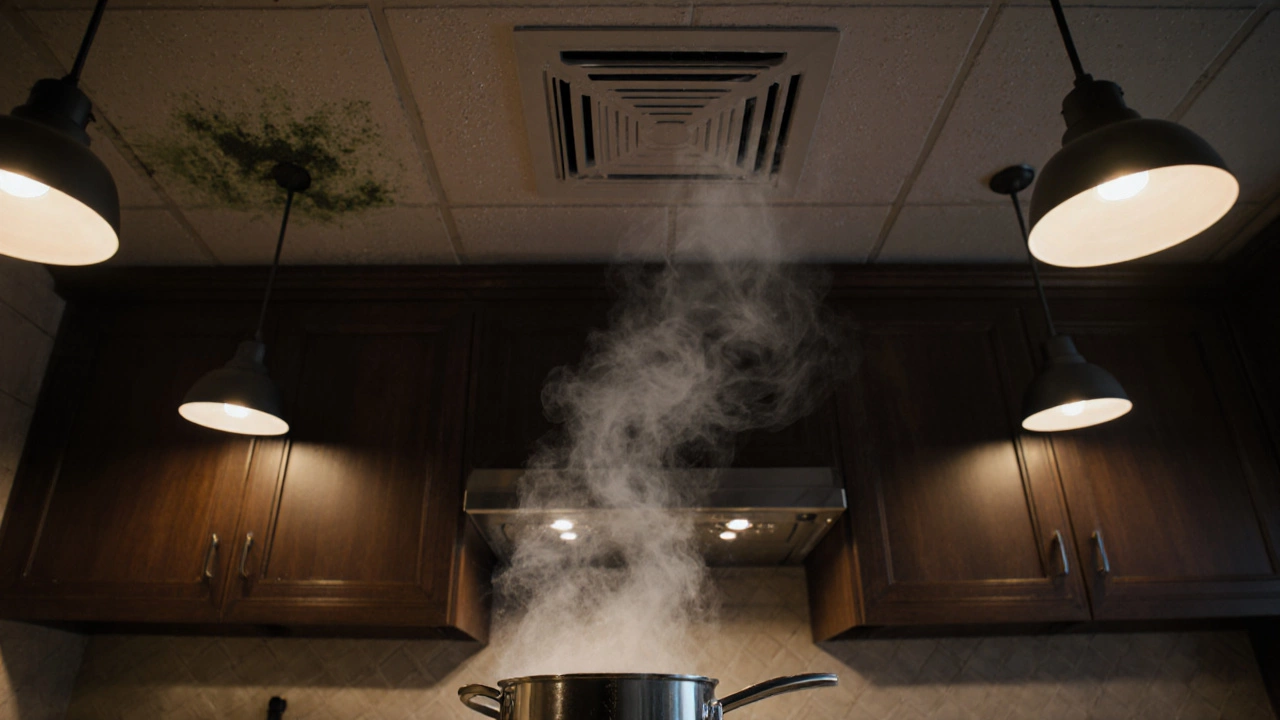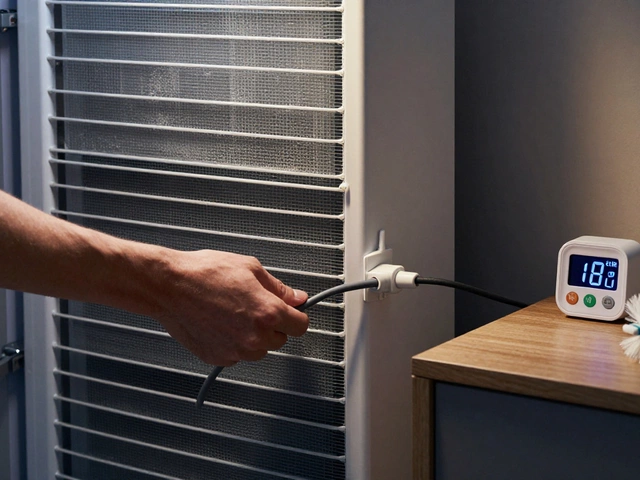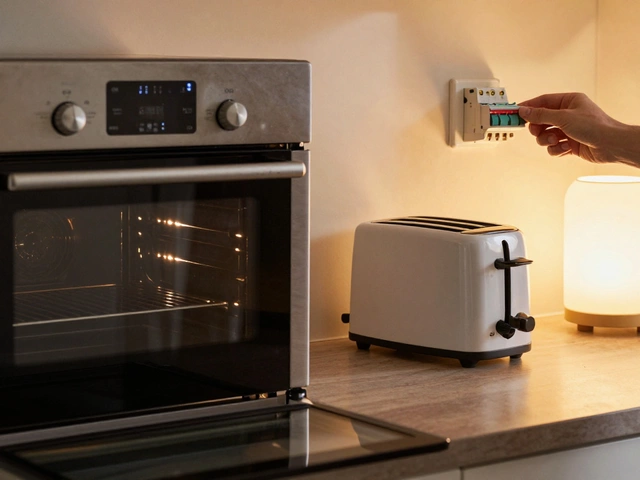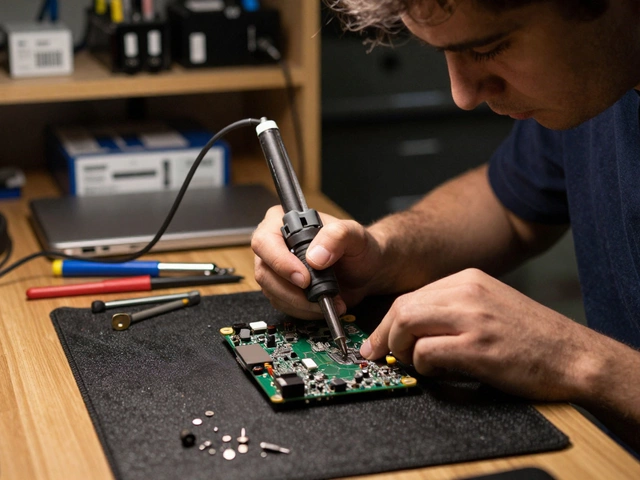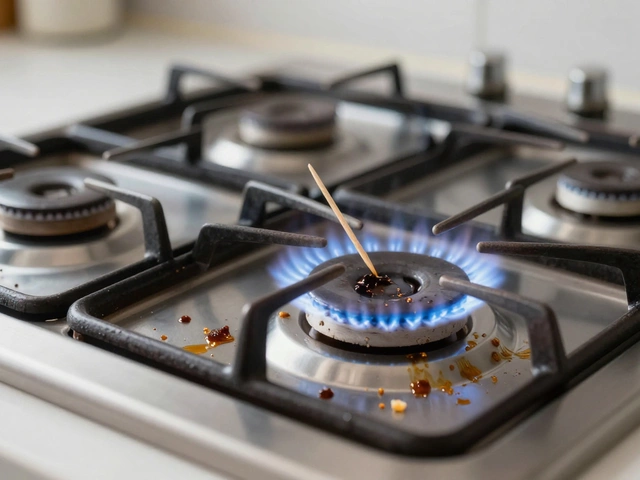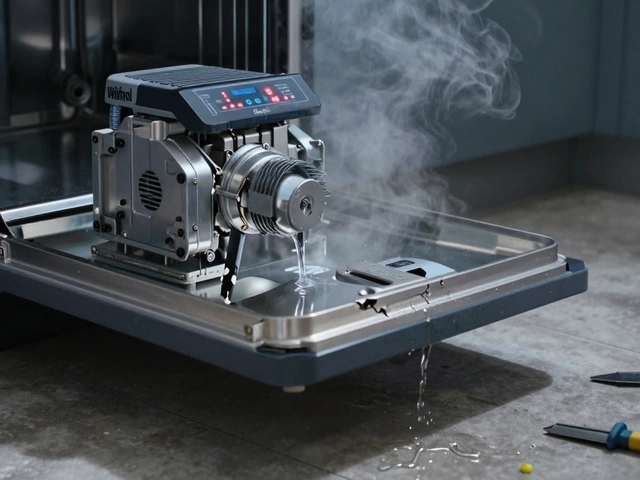Ventilation Cost Calculator
How Much Could You Be Losing?
Calculate your potential energy costs from inadequate ventilation based on your kitchen usage
Estimated Annual Savings
Based on Vancouver energy rates and 12% average efficiency loss
Energy loss: 12% of total kitchen energy use
Annual cost: $0
Quick Takeaways
- Skipping an extractor fan can cause mold, lingering odors, and higher energy bills.
- Excess moisture speeds up appliance wear and can trigger fire hazards.
- Poor ventilation reduces indoor air quality and may violate local building codes.
- Simple fixes-like window vents or periodic cleaning-can mitigate many issues.
- Regular inspection keeps the fan efficient and extends the life of kitchen appliances.
Why an Extractor Fan Matters
Extractor fan is a forced‑air ventilation device installed in kitchens and bathrooms to expel moisture, heat, and cooking fumes to the outdoors. When it runs, it pulls hot, humid air out through a duct, replacing it with fresh air from the home.
That steady airflow does more than keep the kitchen smelling fresh. It protects structural elements, keeps appliances running smoothly, and safeguards the health of anyone breathing the indoor air.
What Goes Wrong Without One
Turn the fan off, and a cascade of problems starts building up. Below are the most common issues.
1. Moisture Buildup and Mold Growth
Mold is a fungus that thrives in damp, poorly ventilated environments. Every time you boil water or fry food, steam rises. Without a fan, that steam condenses on walls, cabinets, and ceiling tiles. In a Vancouver climate-where humidity is already high-the extra moisture creates the perfect breeding ground for mold within days.
2. Lingering Odors and Grease Deposits
Cooking releases volatile organic compounds (VOCs) and grease particles that cling to surfaces. Without proper exhaust, the odors settle into upholstery, carpets, and even HVAC ducts, making the whole house smell like a fried‑onion kitchen.
3. Increased Risk of Fire Hazard
Grease accumulation inside the hood and on surrounding surfaces can ignite if it reaches its flash point (about 350°F/175°C). A fan normally pulls these particles away, reducing the fire‑starter load. When the fan is missing, the risk climbs dramatically.
4. Carbon Monoxide Buildup
Carbon monoxide is a colorless, odorless gas produced by incomplete combustion of fuels. Many modern stoves use gas, and poor ventilation can allow CO to linger, especially if the burner is left on low for long periods. Even low‑level exposure can cause headaches and fatigue.
5. Strain on Appliances and Energy Efficiency
The stove and oven work harder to maintain set temperatures when heat isn’t removed. This extra load raises electricity or gas consumption, costing you more each month. Over time, the added thermal stress can shorten the lifespan of burners, ovens, and even refrigerators placed nearby.
6. Violation of Building Codes
Most Canadian provinces-including British Columbia-require mechanical ventilation in kitchens. Skipping the fan can put you out of compliance with the building code a set of regulations governing construction safety and performance. Non‑compliance may affect insurance claims and resale value.
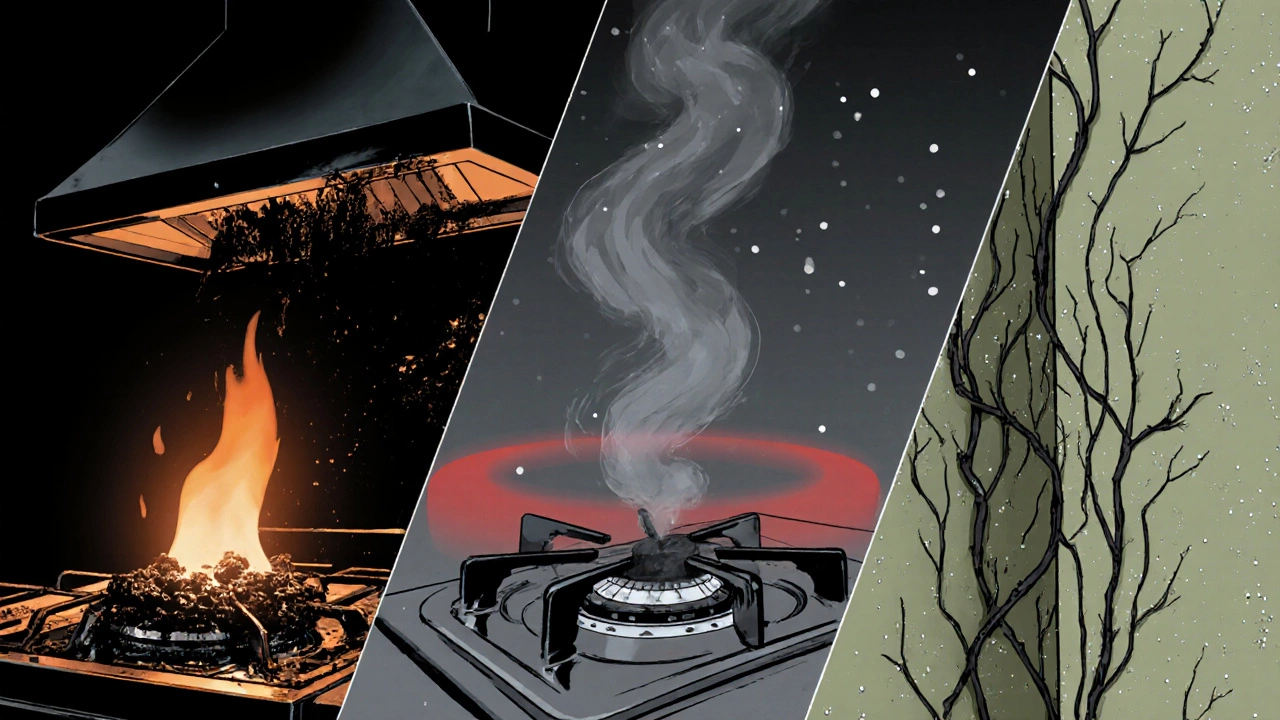
How These Issues Affect Your Home
Let’s break down the downstream impact of each problem.
- Structural damage: Persistent moisture can rot wooden joists and warp drywall, leading to costly repairs.
- Health concerns: Mold spores trigger allergies, asthma attacks, and sinus infections. CO exposure, even at low levels, can cause chronic headaches.
- Higher utility bills: Inefficient appliances draw extra power. Studies in Vancouver homes showed a 12% increase in kitchen‑related energy use without proper ventilation.
- Reduced resale value: Home inspections flag missing ventilation, often resulting in buyer‑requested repairs before sale.
Practical Ways to Mitigate When You Can’t Install a Fan
If you’re in a rental, a remodel in progress, or simply can’t afford a new unit, there are stop‑gap measures.
- Open windows or use a portable window exhaust blower while cooking.
- Place a dehumidifier nearby to pull excess moisture from the air.
- Wipe down surfaces with a degreaser after each cooking session to stop grease buildup.
- Install a passive vent (a louvered vent that opens to the outdoors) if building codes allow.
- Schedule regular professional clean‑outs of existing ducts, even if the fan is off.
These tricks won’t replace a properly sized fan, but they keep the worst consequences at bay.
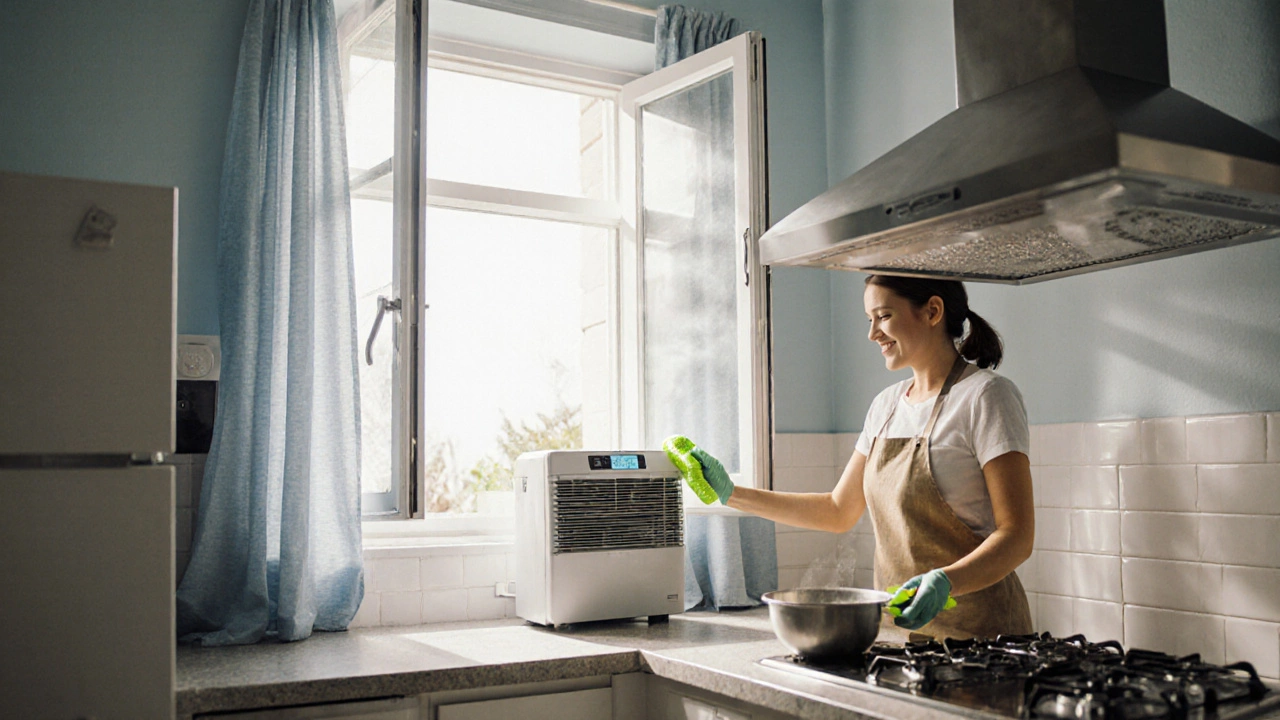
Checklist: Is Your Kitchen Ventilation Up to Par?
Use this quick audit before your next cooking marathon.
- Is the extractor fan installed at least 650 mm from the cooking surface?
- Does it have a minimum flow rate of 300 m³/h for electric stoves or 400 m³/h for gas?
- Is the external duct free of obstructions and properly sealed?
- Do you notice any mold, condensation, or persistent odors?
- Are you aware of the local building code requirements for kitchen exhaust?
If any answer is “no,” it’s time to call a qualified technician.
When to Call a Professional
Even the savviest DIYer should hand over the job when you encounter:
- Complex ductwork that runs through walls or ceilings.
- Electrical wiring that needs to be upgraded for a higher‑capacity fan.
- Signs of mold inside the duct itself.
- Repeated tripping of circuit breakers when the fan runs.
A licensed contractor can ensure the fan meets energy efficiency performance standards that reduce power consumption while maintaining airflow targets and is properly grounded.
Bottom Line
Skipping an extractor fan isn’t just an inconvenience; it’s a silent threat to your home’s health, safety, and wallet. The moment you notice excess steam, stubborn smells, or early signs of mold, it’s a sign that ventilation is failing. The best defense is a properly sized, well‑maintained fan-but when that’s not possible, the quick fixes above can keep damage in check until you get a permanent solution.
Can I use a kitchen window instead of an extractor fan?
Opening a window provides fresh air, but it doesn’t actively pull steam and grease out. It works as a temporary measure, especially in mild weather, but you’ll still face moisture buildup and odor issues over time.
How often should I clean my extractor fan?
At least once a year for light use, and every six months if you cook fried or oily foods frequently. Clean the filters, check the duct for grease, and wipe the hood interior.
What flow rate is enough for a standard kitchen?
A minimum of 300 cubic meters per hour (m³/h) for electric cooktops and 400 m³/h for gas. Larger kitchens or heavy‑use setups may need 600 m³/h or more.
Is mold from a missing fan covered by home insurance?
Usually not, unless you can prove the damage was sudden and accidental. Ongoing neglect is typically considered a maintenance issue, which policies exclude.
Do Vancouver building codes require an extractor fan?
Yes. The BC Building Code mandates mechanical ventilation in kitchens to control moisture and indoor air quality. Non‑compliance can affect permits and resale inspections.
